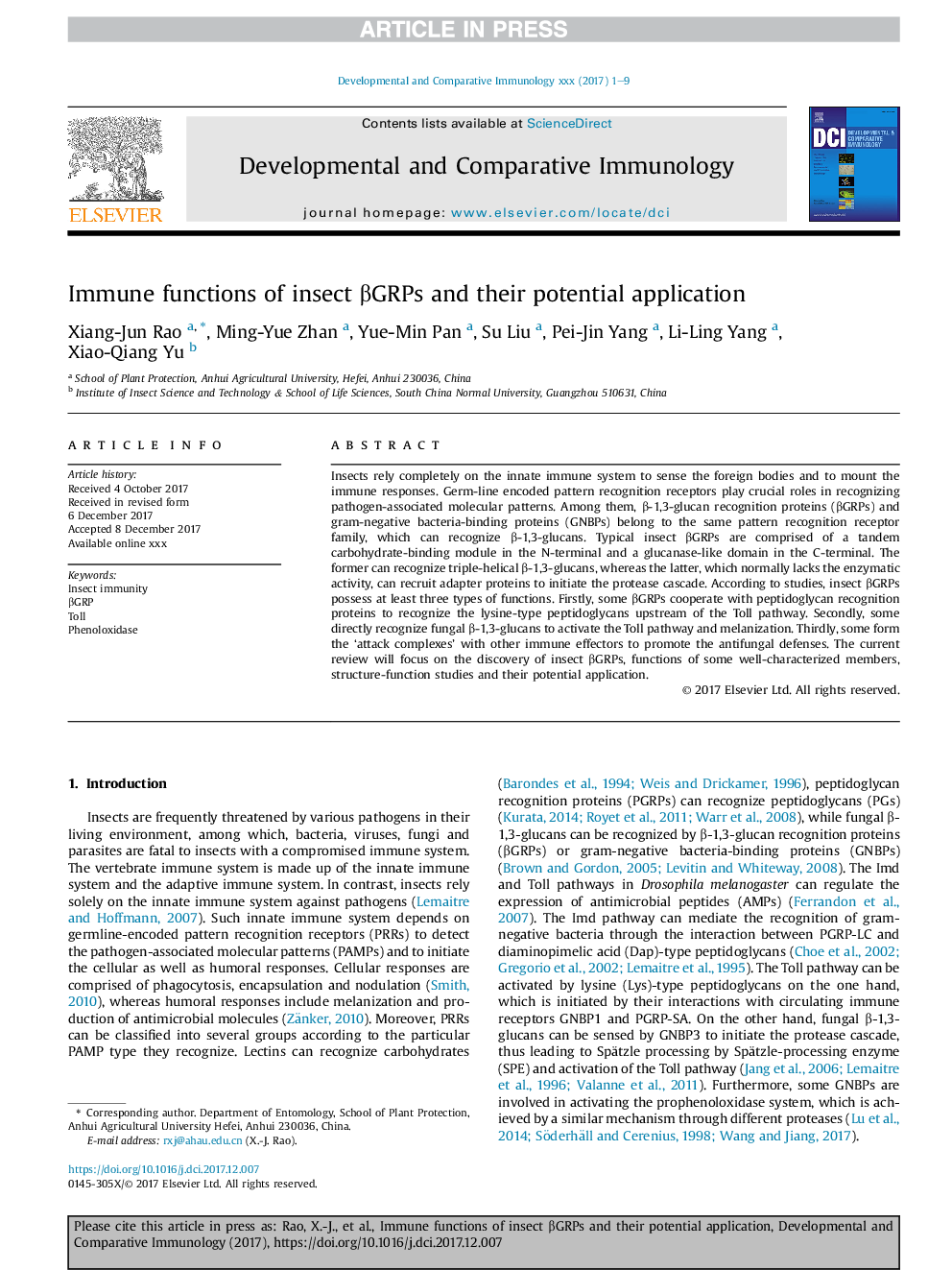| Article ID | Journal | Published Year | Pages | File Type |
|---|---|---|---|---|
| 8497769 | Developmental & Comparative Immunology | 2018 | 9 Pages |
Abstract
Insects rely completely on the innate immune system to sense the foreign bodies and to mount the immune responses. Germ-line encoded pattern recognition receptors play crucial roles in recognizing pathogen-associated molecular patterns. Among them, β-1,3-glucan recognition proteins (βGRPs) and gram-negative bacteria-binding proteins (GNBPs) belong to the same pattern recognition receptor family, which can recognize β-1,3-glucans. Typical insect βGRPs are comprised of a tandem carbohydrate-binding module in the N-terminal and a glucanase-like domain in the C-terminal. The former can recognize triple-helical β-1,3-glucans, whereas the latter, which normally lacks the enzymatic activity, can recruit adapter proteins to initiate the protease cascade. According to studies, insect βGRPs possess at least three types of functions. Firstly, some βGRPs cooperate with peptidoglycan recognition proteins to recognize the lysine-type peptidoglycans upstream of the Toll pathway. Secondly, some directly recognize fungal β-1,3-glucans to activate the Toll pathway and melanization. Thirdly, some form the 'attack complexes' with other immune effectors to promote the antifungal defenses. The current review will focus on the discovery of insect βGRPs, functions of some well-characterized members, structure-function studies and their potential application.
Keywords
Related Topics
Life Sciences
Biochemistry, Genetics and Molecular Biology
Developmental Biology
Authors
Xiang-Jun Rao, Ming-Yue Zhan, Yue-Min Pan, Su Liu, Pei-Jin Yang, Li-Ling Yang, Xiao-Qiang Yu,
